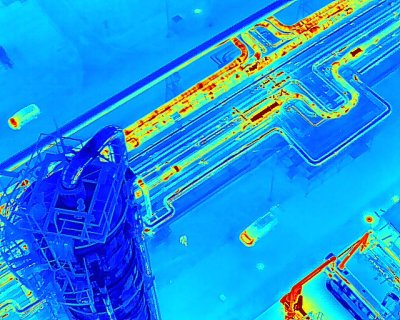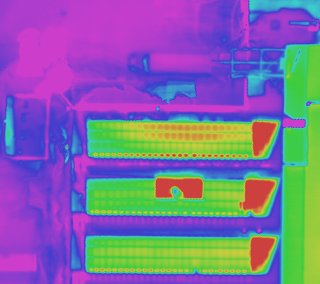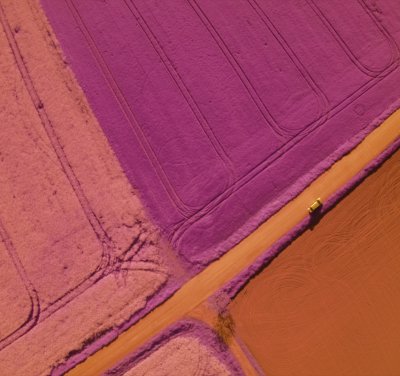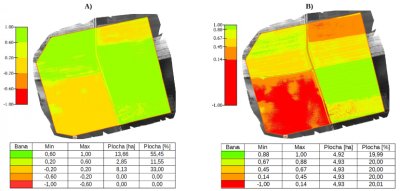We conduct inspection flights with our unmanned aerial vehicles (drones):
- inspection in the visible spectrum – monitoring of the condition of chimneys, high-voltage columns, wind farms, rock weathering, etc.
- thermal inspection – inspection of photovoltaic power plants, monitoring of heat leaks from buildings or pipelines.
The output of inspection is 2D images, videos, orthophoto maps in RGB, IR spectrum. We also perform aerial surveys and thermal mapping for multipurpose 3D outputs.
We hold a license issued by the Civil Aviation Authority to operate unmanned aerial vehicles.
Our drones are insured against possible damage from their activities.

Termální snímkování
S naší termální kamerou (teplotní rozlišení 0,1 °C) ukotvenou na bezpilotním letounu provádíme inspekce budov a technických zařízení, kde sledujeme úniky tepla a další vady. Výstupem inspekcí jsou 2D snímky, videa nebo ortofotomapy. Termální mapu můžeme zobrazit také na 3D modelu vaší budovy nebo technologie. Snímkujeme rovněž zemědělské plochy, kde zachycujeme tepelné záření rostlin či živočichů.

Detekce zatékání střech
Termálním mapováním zjišťujeme poruchy izolace a zatékání především u plochých střech výrobních, skladových a prodejních objektů. Kontrolujeme také například fotovoltaické panely.
Vyhotovíme vám bezpilotní letecké snímkování a provedeme i následné zpracování do ortofotomapy nebo výkresu včetně vyznačení poruch. Veškeré výsledky dodáváme v online prostředí pro snadné prohlížení a sdílení.

Multispektrální snímkování
Našimi bezpilotními prostředky provádíme také sběr dat pro vyhodnocení kvality půdy a zemědělských plodin, stavu vegetace a jeho změn v čase. Využíváme k tomu čtyřkanálovou kameru se čtyřmi samostatnými senzory pro snímání světla ve čtyřech pásmech vlnových délek:
- zelené světlo (510–550 nm)
- červené světlo (620–760 nm)
- red edge (690–730 nm)
- blízká infračevená oblast (NIR; 760–1 400 nm)
Na základě odrazivosti světla od listů rostlin lze určit množství chlorofylu, které obsahují. Na základě této hodnoty je možné posoudit jak zdraví rostlin, tak sekundární ukazatele, například kvalitu nebo aktuální vlhkost půdy. Vytváříme tak podklady pro precizní zemědělství. Snímkování slouží také ke sledování vegetačních příznaků v archeologickém průzkumu.

Indexní mapy
Na obrázku A je indexní mapa NDVI z multispektrálních snímků s hodnotami rozdělenými v intervalech se stejným rozsahem. Obrázek B zachycuje indexní mapu téže oblasti, ve které jsou hodnoty rozděleny do pěti stejných oblastí. Hodnoty odpovídající vegetaci spadají do intervalu (0,2; 0,9). Zdravá a hustá vegetace má hodnoty v rozsahu (0,6; 0,9), řídká nebo zatěžovaná pak v intervalu (0,2; 0,5). Hodnoty menší než 0,2 představují kameny, písek nebo sníh, záporné hodnoty vodu.